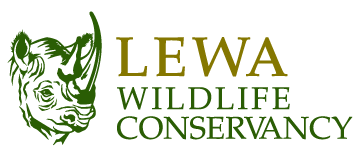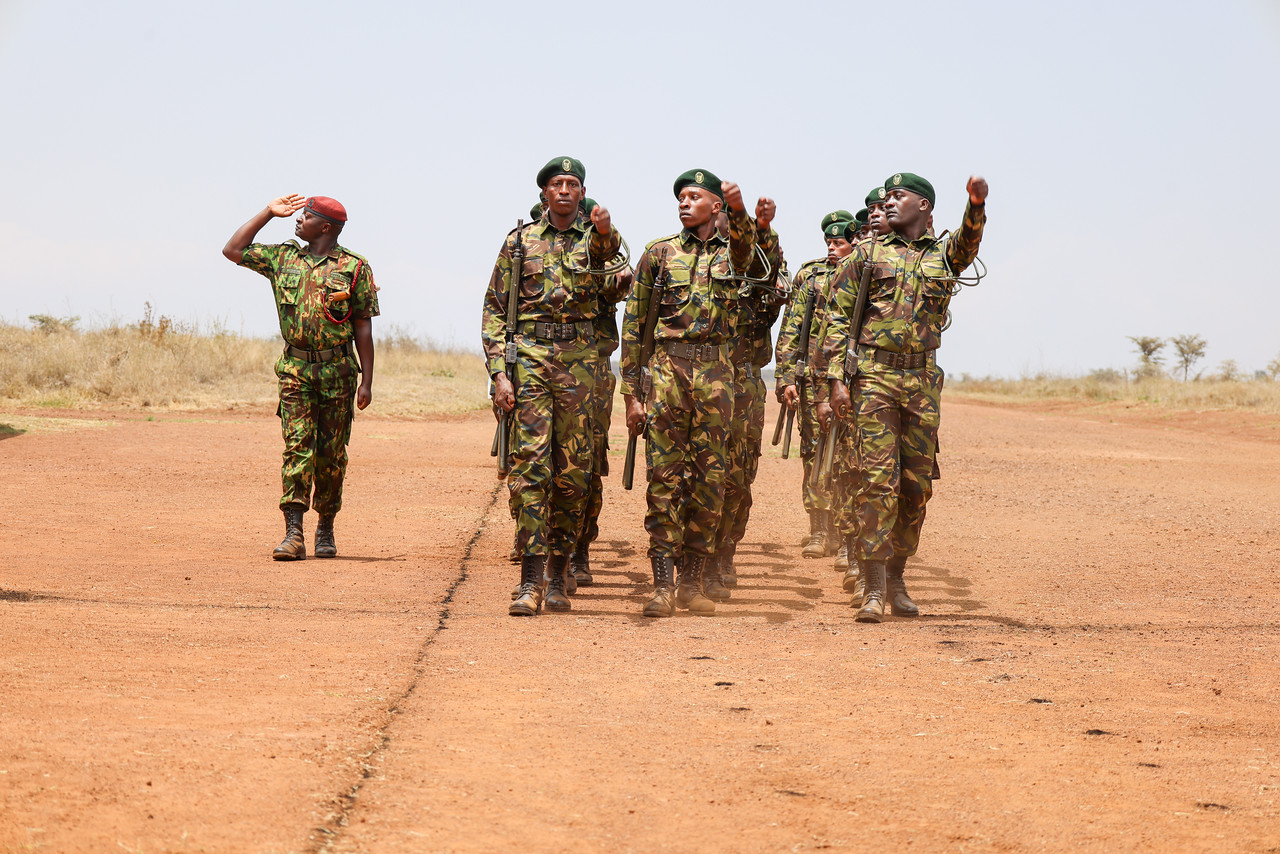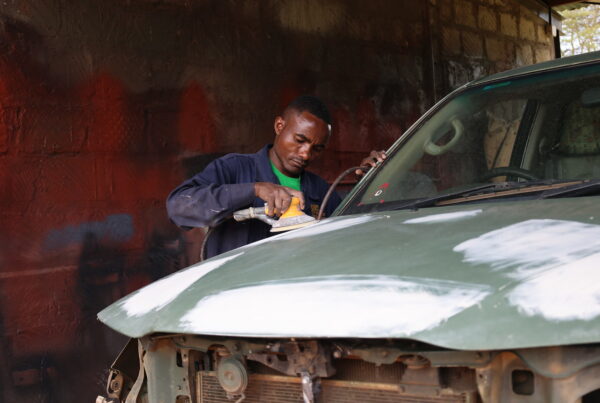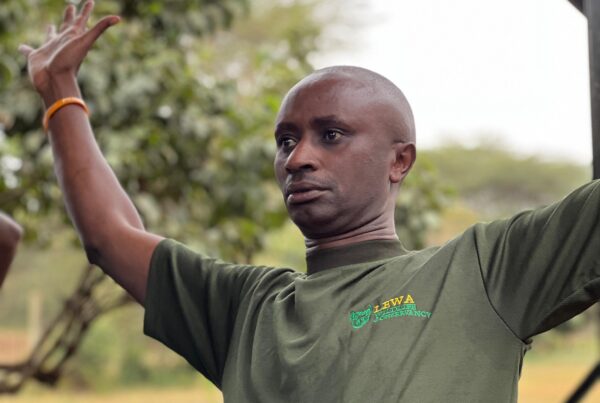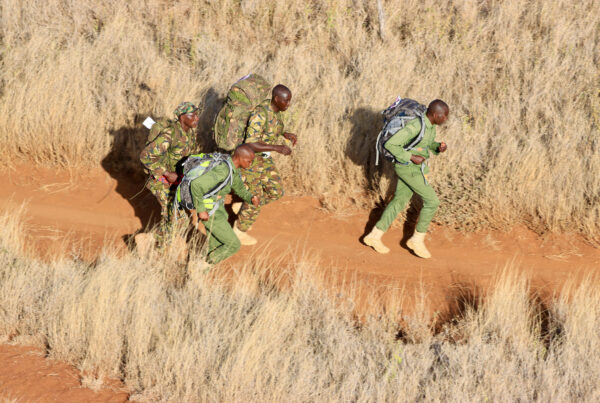What a quarter! Lewa was the epicentre of conservation this season. We paid tribute to the life and legacy of Songare, our treasured rhino matriarch, celebrated our rangers’ grit in the Wildlife Ranger Challenge, and hosted hundreds of global experts for the African Ranger Congress and EarthRanger conference. All while helping local students reach new heights. Ready to see the difference you made?
Rangers: The Heartbeat of Conservation
For Lewa’s rangers, every day is a test of endurance, courage, and commitment: a race against threats to wildlife. This quarter, 37 recruits completed a rigorous four-week National Police Reserve course at Lewa, mastering tactical, ethical, and field skills to protect both wildlife and local communities.

Rangers stand tall during their pass-out ceremony after completing a rigorous four-week National Police Reservist training at Lewa. ©Lewa Wildlife Conservancy
At this year’s Wildlife Ranger Challenge, Lewa’s teams showcased exceptional endurance and unity. Running 21 kilometres across demanding terrain, the rangers competed in full gear with men carrying 22 kilograms and women 10 kilograms — a true test of strength and resolve.
The men’s team, the “Lewa Lions,” earned an impressive third-place finish at Lewa, standing out among teams from across Africa. Their performance reflected not just athletic skill but the discipline and teamwork that define Lewa’s ranger force, qualities that drive their work every day in safeguarding wildlife and communities.

The Lewa Lions on course in the Wildlife Ranger Challenge race.
We also hosted the African Ranger Congress (ARC) organized by the Game Rangers Association of Africa, welcoming 150 rangers from 20 African countries. Ranger Nanyuki was recognized as Best Field Ranger in Africa. A proud testament to Lewa’s culture of excellence and commitment to wildlife protection.

Kapuna Lepale Nanyuki (middle) was named Best Field Ranger at the African Conservation Awards. In frame: Lewa CEO, Mike Watson (right) & Edward Ndiritu, Head of Antipoaching Unit
Just days later, the EarthRanger Users Conference brought together conservation technology teams from across Africa to share insights and innovations in real-time monitoring. Hosted at Lewa, the event provided a platform for collaboration and peer learning on how technology can strengthen conservation outcomes.
Lewa’s team presented its integrated approach to field protection and data-driven management, demonstrating how real-time monitoring, field operations, and community engagement combine to protect wildlife more effectively. Read more.

Attendees of the Earth Ranger conference held at Lewa. ©Lewa Wildlife Conservancy
Every step rangers take safeguards wildlife, and every contribution from you helps make that possible
Song’are: A Matriarch Who Carried Lewa’s Heart

Song’are, a white rhino who was brought to Ngare Sergoi Rhino Sanctuary (now Lewa) in 1988.
© Lewa Wildlife Conservancy
This quarter, Lewa marked the close of a remarkable chapter: the passing of Song’are, who was one of Lewa’s oldest and most beloved rhinos. At 46, her life was inseparable from the story of Lewa itself.
Song’are arrived before Lewa became a conservancy, when it was still a small rhino sanctuary. She witnessed the fledgling refuge grow into today’s thriving Lewa–Borana landscape, home to over 280 rhinos.
During her lifetime, she gave birth to 14 calves and became a grandmother to 22, leaving a lineage of 36 rhinos whose hoofbeats carry her legacy across Kenya and beyond. Some of her descendants now strengthen rhino populations at Ol Pejeta Conservancy, Loisaba Conservancy and beyond.

Rhino Monitoring Officer, Benson, and Sumpere (right), one of Lewa’s longest serving employees, unveil a plaque in loving memory of Song’are during World Rhino Day celebrations at Lewa.
© Lewa Wildlife Conservancy
“Song’are was more than just a rhino. She was a symbol of resilience and proof of the power of conservation. Through her calves, she has strengthened the future of her species and inspires us to continue protecting rhinos for generations to come.” – Benson Kibet, Rhino Monitoring Officer
As we mark 30 years of conservation, Song’are’s life reminds us of what endurance and care can achieve. The best tribute we can offer her is to ensure her descendants walk safely across this land, watched over by rangers, communities, and conservationists who continue the work she began. Read more about Song’are’s legacy.
More Safe Habitats for Rhinos to Roam

Trucks, a helicopter, and dedicated teams move rhinos to new safe habitats during a recent rhino translocation. ©Lewa Wildlife Conservancy
This year, Lewa contributed to the expansion of safe habitats for rhinos to roam. Nine eastern black rhinos were translocated from the Lewa-Borana landscape to Segera Conservancy, forming its founding population. Among the rhinos translocated this quarter was Kitui, an orphaned calf born on Lewa in 2015 to a blind mother. Hand-raised alongside his brother Elvis, Kitui’s survival was never certain. Today, he thrives – strong, confident, and a leader among his peers.
Additionally, Loisaba Conservancy welcomed southern white rhinos this quarter for the first time. Ten rhinos, including six from the Lewa-Borana landscape, were carefully moved during a 10-day operation, marking a historic expansion of safe habitat for the species. With Kenya now home to the world’s third-largest population of southern white rhinos, we’re on course to reverse decades of decline.
Each translocation and successful release requires trucks, cranes, helicopters, veterinarians, and rangers — a collective effort ensuring that rhinos have a fighting chance.
